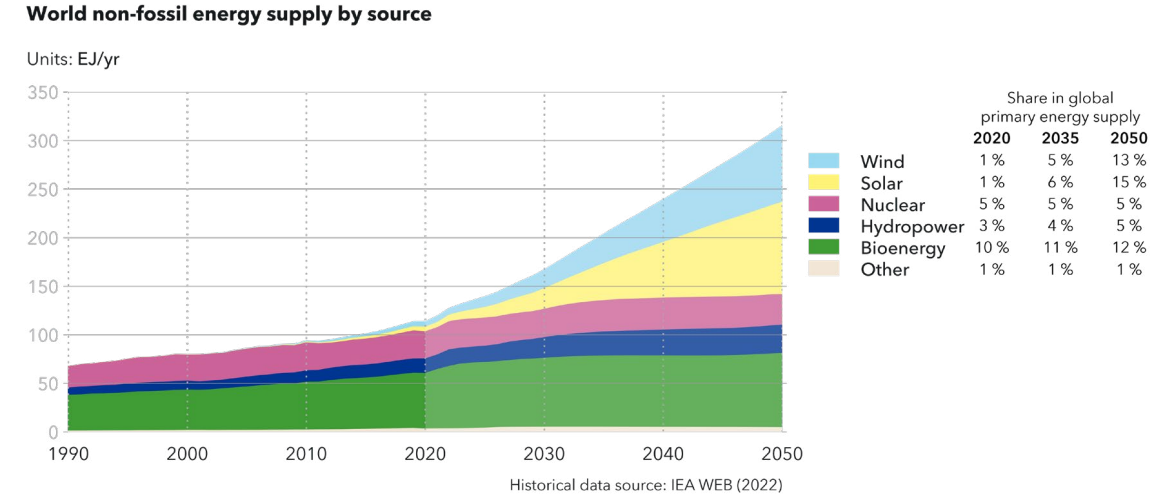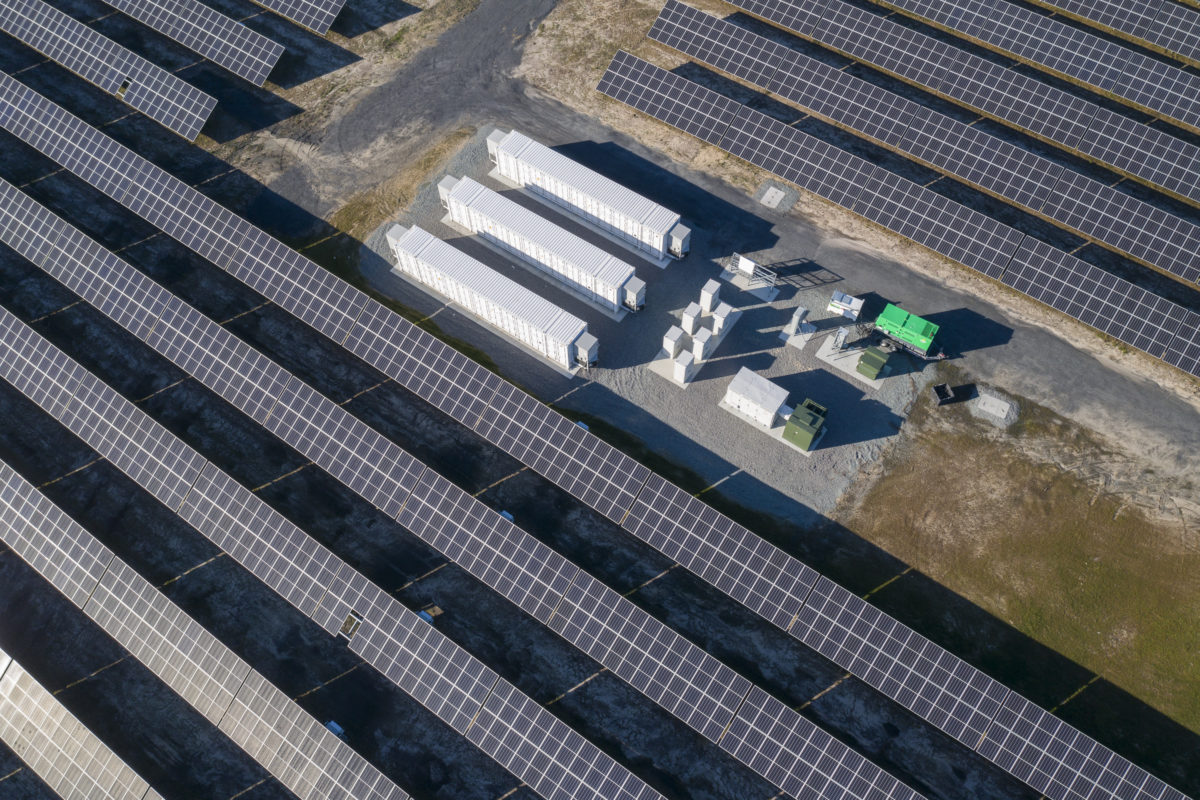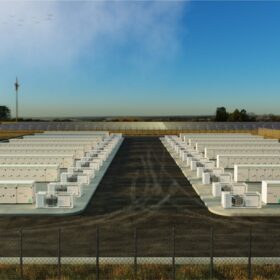DNV, a global risk management firm, offered its annual outlook on the global energy transition. Solar was placed in the spotlight as the leader in renewable energy supply.
“In 2050, solar PV will be in unassailable position as the cheapest source of new electricity globally,” said DNV.
As the world transitions toward carbon emissions-free electricity generation, DNV expects the share in generation mix for coal to decrease 4% and gas to decrease 8% by mid-century. As the global fossil fuel industry becomes a metaphorical fossil itself, DNV expects the world energy mix to be 70% reliant on variable renewable sources like solar and wind power. Fossil fuels will represent just over 10% of the energy mix by that time.
Along this path, solar capacity increases 22-fold in DNV’s energy transition vision. The firm said it views variable renewables as the cheapest and quickest route to both decarbonization and energy security.

Costs are expected to improve by mid-decade. The global weighted average levelized cost of energy (LCOE) for solar is currently around $50 per MWh for solar and $120 per MWh for solar-plus-storage. DNV expects solar LCOE to drop to $30 per MWh by mid-century, with some individual project costs well under $20 per MWh.
“The main driver for this reduction in LCOE is the reduction of unit investments costs, which are around $900 per kW as a global average now. This will fall significantly with every doubling of solar PV installation globally, reaching $650 per kW in 2050,” said the report.
(Read: “U.S. solar deployment to grow 40% this year, remains lowest-cost option“)
Currently, the levelized cost of solar-plus-storage is currently more than double that of standalone solar. A continuous decline in battery prices will narrow this gap to around 50% by mid-century, said DNV.
Despite its higher costs, solar-plus-storage has an advantage in capture price. Plants with storage can charge their batteries when sunlight is plentiful during the day and sell the stored electricity when the price is high. DNV said that by 2038, the capture price advantage of solar and storage co-located projects will surpass the cost disadvantage, making these projects even more attractive.
“PV and storage systems are designed as a ‘package’ that can produce energy on demand, just like hydropower, nuclear, or combustion power plants,” said DNV.
In 10 years, DNV said roughly 20% of solar projects will be built with dedicated storage, and by mid-century such projects will reach about 50%.
DNV highlighted the impressive growth ramp of solar globally, which was 1 GW per year in 2004, 10 GW in 2010, and 100 GW in 2019. Despite global disruptions in supply chains due to COVID-19 and the Russian invasion of Ukraine, 150 GW was added worldwide in 2021. DNV expects global annual installations to continue to rise, reaching 550 GW per year.
“By mid-century, total installed capacity will be 9.5 TW for solar PV and 5 TW for solar and storage. The resulting 14.5 TW of solar capacity is 24 times greater than in 2020,” said DNV. “While solar will have a share of 54% of installed capacity in mid-century, it will account for 30% of global on-grid electricity generation.”
DNV’s full energy transition outlook can be found here.
This content is protected by copyright and may not be reused. If you want to cooperate with us and would like to reuse some of our content, please contact: editors@pv-magazine.com.









DNVs prediction seems to be quite conservative. Weren’t recent projections showing 1 TW solar capacity additions for 2030? Let’s hope for that.
The news is good for us, who need cleaner, more available power, and – reliably – affordable “solar energy”: Microgrid and Built Surfaces installations – modular, responsive, upgradeable, defensible – and not cutting into, and across, the remaining natural wildlands…
Biologically and geophysically “friendly” “solar” is already here. Despite desperate attempts by corporate utility scale speculative investors, to “disappear” it, it is recognized, by more people than just land, water, wild environment preservation management scientists…Like herded cats, moving forward and outwards, it is recognized for its flexibility, lower “true” costs, and will vote with its feet, to outcompete our current last century tech and business model – the best that people could do – (at ‘least cost’ to their own enterprises) – under the US Constitution of the 1700’s).
I am optimistic and seeing possibilities for redirecting billions of dollars back around to – small – almost military-fitted businesses with expertise, and a solid, financially growable, culture, with community roots.
Thank you for the unfolding information…
Sadly, PV and Wind will never be cheapest , or even cheap. Every group pushing these always disregards facts and just lies about it. These are both backed up by storage and/or large base load power plants, which are normally O&G or coal. Do not get me wrong. I like PV and wind. However, these solar systems ( PV and wind are both driven by the sun ), should remain a part of our energy matrix, used in the best locations, and never in
massive amount. Together, these should be limited to less than 33% of our energy. And yes, each of hydro, geothermal, fission, and fusion should be less than 33% of our matrix.
Seems like solar with battery has already penetrated most residential installations in California spurred by changes in regulations.
Sure has taken a long time to adopt LFP batteries to replace L-ion ones, for storage. It’s long past due.